
Michael:
Our lesson tonight is on Steve Cropper's '60s soul, blues & rock style.
There is a lot of rhythmic chords and guitar licks, he has a great style!
fourmanshed:
who is steve cropper
Michael: Steve Cropper played for Booker
T and the Mgs and played on many rhythm & blues recordings. Many of you
might remember Steve in "The Blues Brothers", he's the guitar player
with the beard and long hair. Here's some of the rhythm & licks we will be going over.
Here's a sample of some of the licks and rhythms patterns you'll learn:
Michael:
here's the breakdown of the lesson
1. 7th chords
2. 7th chord rhythm patterns
3. 7th chords with licks added
4. Playing over various jam tracks
Jr:
cool example are we going to be play it
Michael:
yes, here's our jam track:
Michael: Here's the scale pattern we'll
use, notice how the jam track has a easy flow to the groove:
Jr:
they sound good together
Michael:
the loop only has the 1, and 4 of the progression
Anthony21:
That looks like the pentatonic scale
Michael:
tyes it is the E Minor Pentatonic scale pattern
Kintero:
it's the best scale for blues...
Tom:
why are 7th chords so important?
Michael:
tom they have a very distinct sound
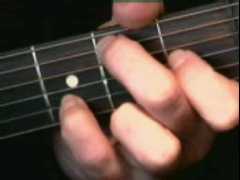
Michael:
notice the fingering
Michael:
in this chord you have.....
1, 3, 5, b7, you add the little finger to add an extra b7 note.
Anthony21:
THere are different ways to form the E7 though like can't you do a regular E and then add your pinky t string 2 3rd fret?
fourmanshed:
what makes it a 7?
Tom:
but the open E gives you options that you don't normally have
matt:
the D
Michael:
yes it does
matt:
and the G sharp
Michael:
let's try the second example of the chords
Chris:
so you dont need the 3 rd finger on the D string for that to be an E7 ?
Michael:
no you don't, on this variation you pick the open root note first then the rest of the chord,
try these over the jam track, I'll send you one more E 7 variation
darntootin:
ad tremolo for cool spooky effect
Michael:
that's a good idea darntootin, on the last E7 lick you hammer your first finger from open to 1st fret'3rd string
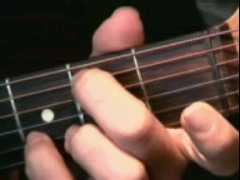
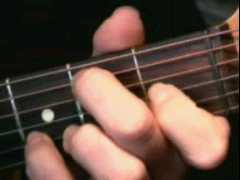
Michael:
I'm just laying down the foundations of what we will be learning, here's the A7:
Jr:
now play e7 and a7
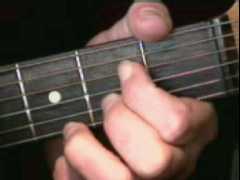
Michael:
notice how you finger the A7 chord, you have the third finger on the 1st string/3rd fret
Jr:
i see you use 3 fingers?? for a7
Michael:
yes
Anthony21:
Jr there are many many different ways of forming the same chord
Tom:
the G string is open
Michael:
yes Tom
Jr:
ok i do same on g and c cord at times
darntootin:
not fer me im tuned to Eb
Michael:
that would make a difference
Jr:
open g and csus2 or @#$% i don`t know
Michael:
LOL, we'll cover that in a little bit
fourmanshed:
it sounds better when you pick the chords
Jr:
hey teach i pick with fingers open i see yours is closed am i ok
Michael:
I usually cup my hand and brace the palm on the bridge
Jr:
i see lots of players do that but i started with mine open
Jr:
and find it hard to change
Jr:
do i need to
Anthony21:
I used to play open and I wondered why I broke strings every week..
Michael:
here's the other jam track you can play over, let's try the combo licks
fourmanshed:
can you show anythere 7 chord
Michael:
notice how you combine playing the chords and then licks in between, I actually use my second finger
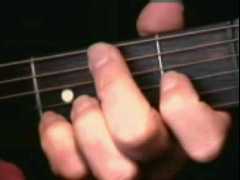
Michael:
I lift the second finger up slightly and mute the 6th, you can play the 7th chord all over the neck, is that what you meant fourman?
Anthony21:
In the first bar -- you bend only the C# on second string right
Michael: yes Anthony, I bend the double notes with the 3rd finger, but I have the second finger to help support it
fourmanshed:
no like a d7 or somthins that would go with theres two
darntootin:
teach what chord do you get when you barre the g and on the first two strings with the E7 chord
Michael:
like this Darn tootin?


darntootin:
yeah, SRV likes that one for this sort of stuff
Michael:
oh yea like in Scuttle Button, in the chord I just send you have the 1, 3, 5, 6, b7 & 9,
darntootin:
mary had a little lamb, most of the licks are in the open e pent and bB pent..
and a pent
Michael:
E6/9, here's the next lick combo
fourmanshed:
is ti a 7 becuz its the 7th not on the scale?
Michael:
we'll cover the chords since many of you asked questions about them, the formula you use is based on the scale,
we'll use G major:
G, A, B, C, D, E, F#
G=1, A=2, B=3, C=4, D=5, E=6, F#=7
Michael:
a common major chord has the 1, 3, 5 notes out of that scale, what notes would those be?
fourmanshed:
g b d
Michael:
if you want to make a G maj 7 chord what notes would you use?
AScriabin:
g b d f#
Michael:
yes, now if you want to make the G dominate 7 chord (G7) what notes would those be?
AScriabin:
gbdf
Tom:
1, 3, 5, b7?
Michael:
yes, you both have it, so moving the 7th note down one half step you get the G7
fourmanshed:
is that true with every chord
Michael:
yes fourman, here's the G major scale
Chris:
I never studied theory...think its time to start
fourmanshed:
you dont know how much this is helping me
Michael:
here's the 1, 3, 5 notes from the G major scale, you call them a "Triad" or meaning 3-notes
from the scale, here's the G major chord, notice you have all the same notes in it as the G major triad" you only play them at the same time.
fourmanshed:
got it
Michael:
here's the 1, 3, 5, 7 notes from the scale
Sean:
the effort put forth by the teaches is much appreciated by me
Michael:
yes sean, I do that sometimes, ang sequence of single notes within the scale pattern outside of the "Triad" is called an "Arpeggio",
when these notes are played all at the same time you call them chords, so you notice the notes in the chord I just sent is for the G maj 7 chord
Sean:
teacher do u finger the g go u can jump right to C chord?
Michael:
now remember for the dominate 7 chord what note do you change?
fourmanshed:
the f#
Michael:
yes, you flat (b) that note, in other words you move that note down one half step and make it "F"
fourmanshed:
what string do you play it on
fourmanshed:
high E
Michael:
is this helping you to understand how chords are built?
fourmanshed:
that sounds like a chord that pink floyd uses all the time
Michael:
yes it does,
fourmanshed:
you have clered up so much misunderstanding that i had
Michael:
that's great, I can also send you pictures of the fingerings if you want?
fourmanshed:
i think i can fig. it out
Michael:
can you see how the notes are illustrated in the interactive tab?
Jr:
your g dom 7 chord (G7) is a open G chord ?
Michael:
yes, and you can play that same chord as a barre chord
AScriabin:
I like the maj7 chord, but it doesn't work well with distortion...
Michael:
here's G maj
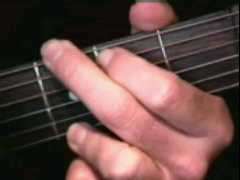
Michael:
G mj 7
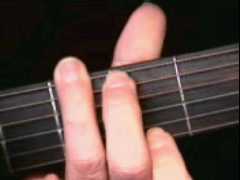
Michael:
G 7 or otherwise called G dominate 7
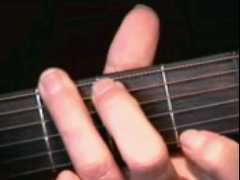
jon:
whats the 7 stand for
fourmanshed:
7th not on the scale
fourmanshed:
note
Michael:
G is for major
Jr:
can a g7 be just 1 string first fret??
Michael:
G mj 7 is when you add the 7th note of the major scale to the chord, Jr yes you can play a portion of the chord like the bottom 3 strings
|
<< load notation from left
|